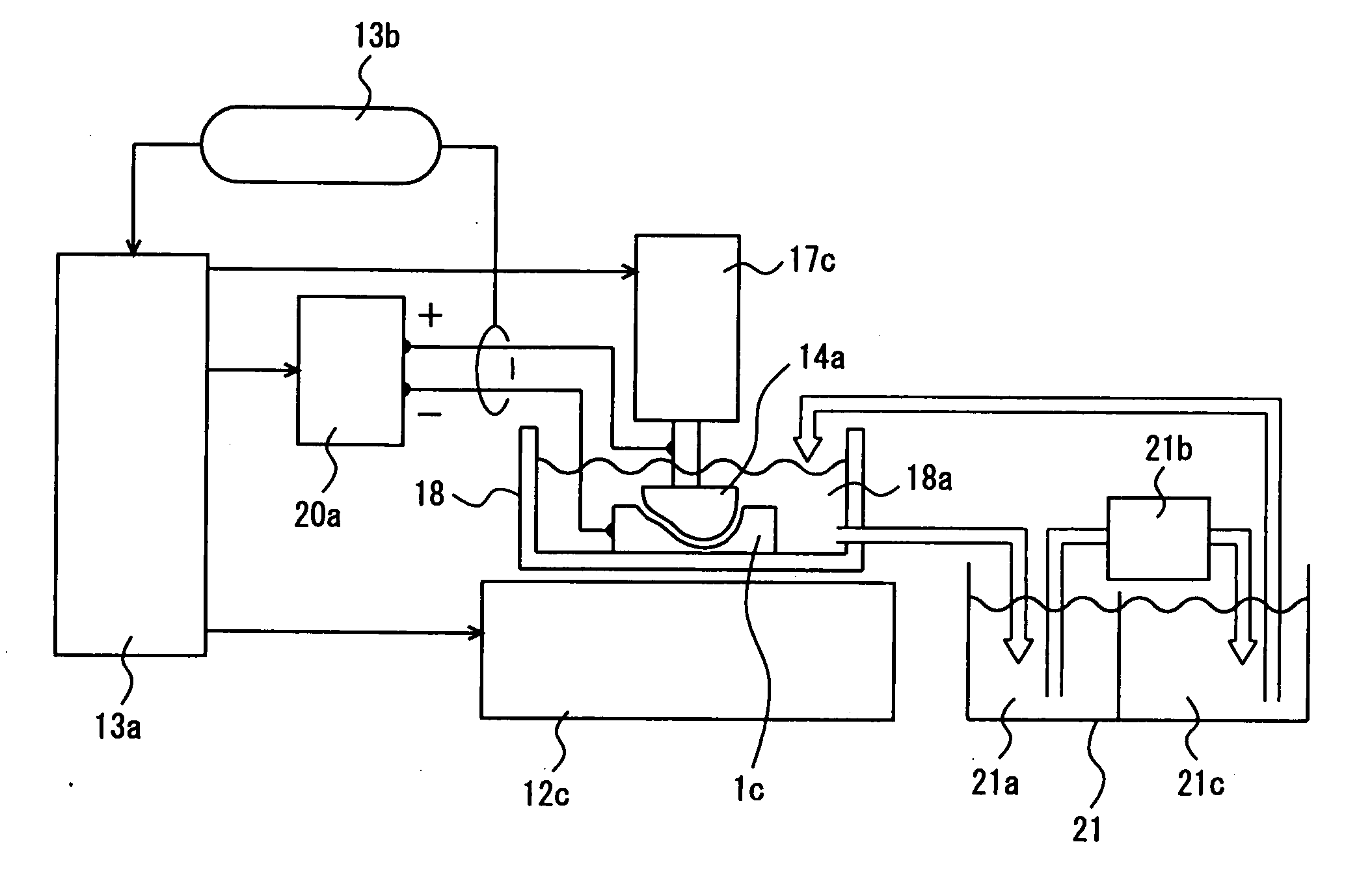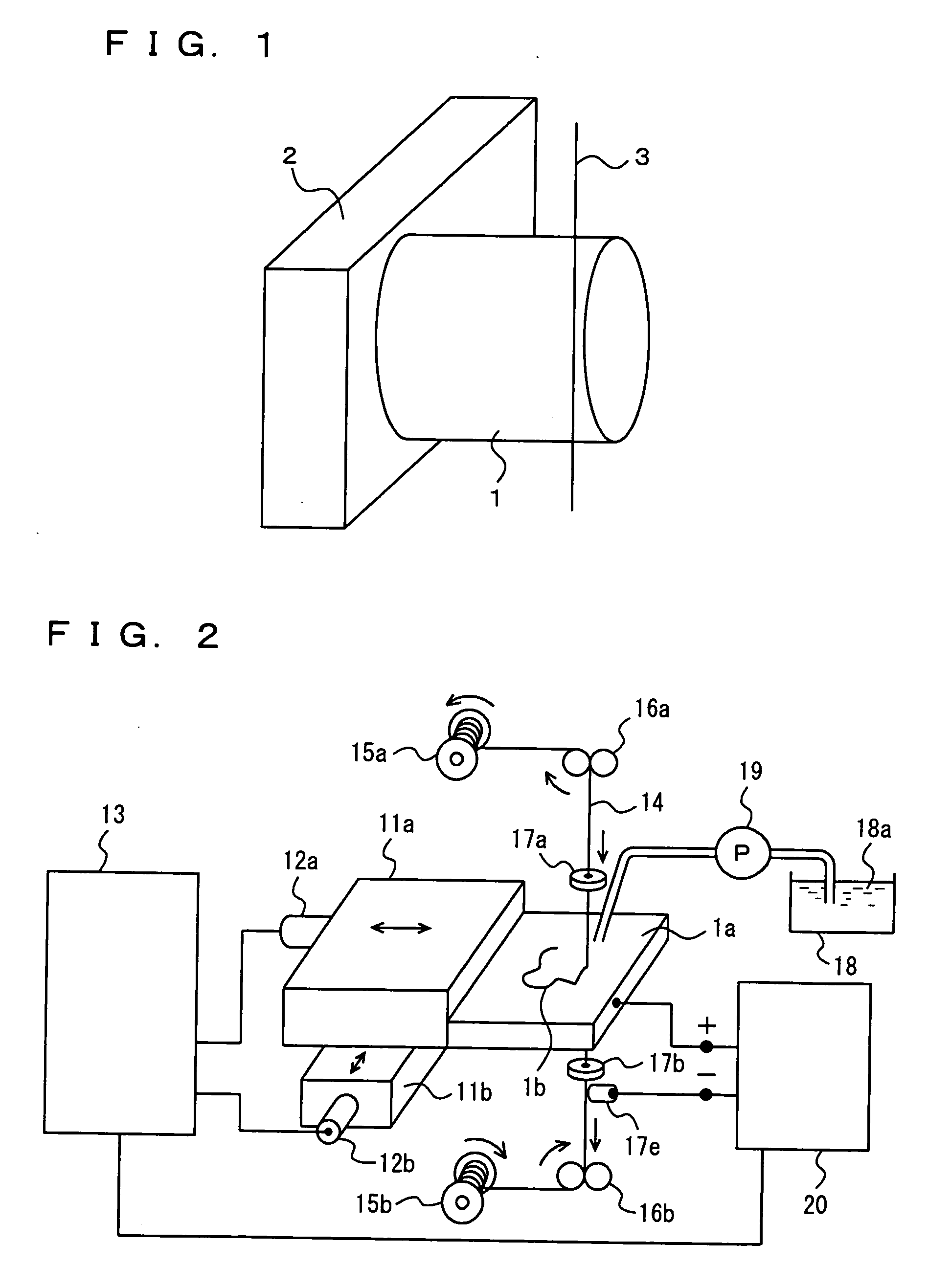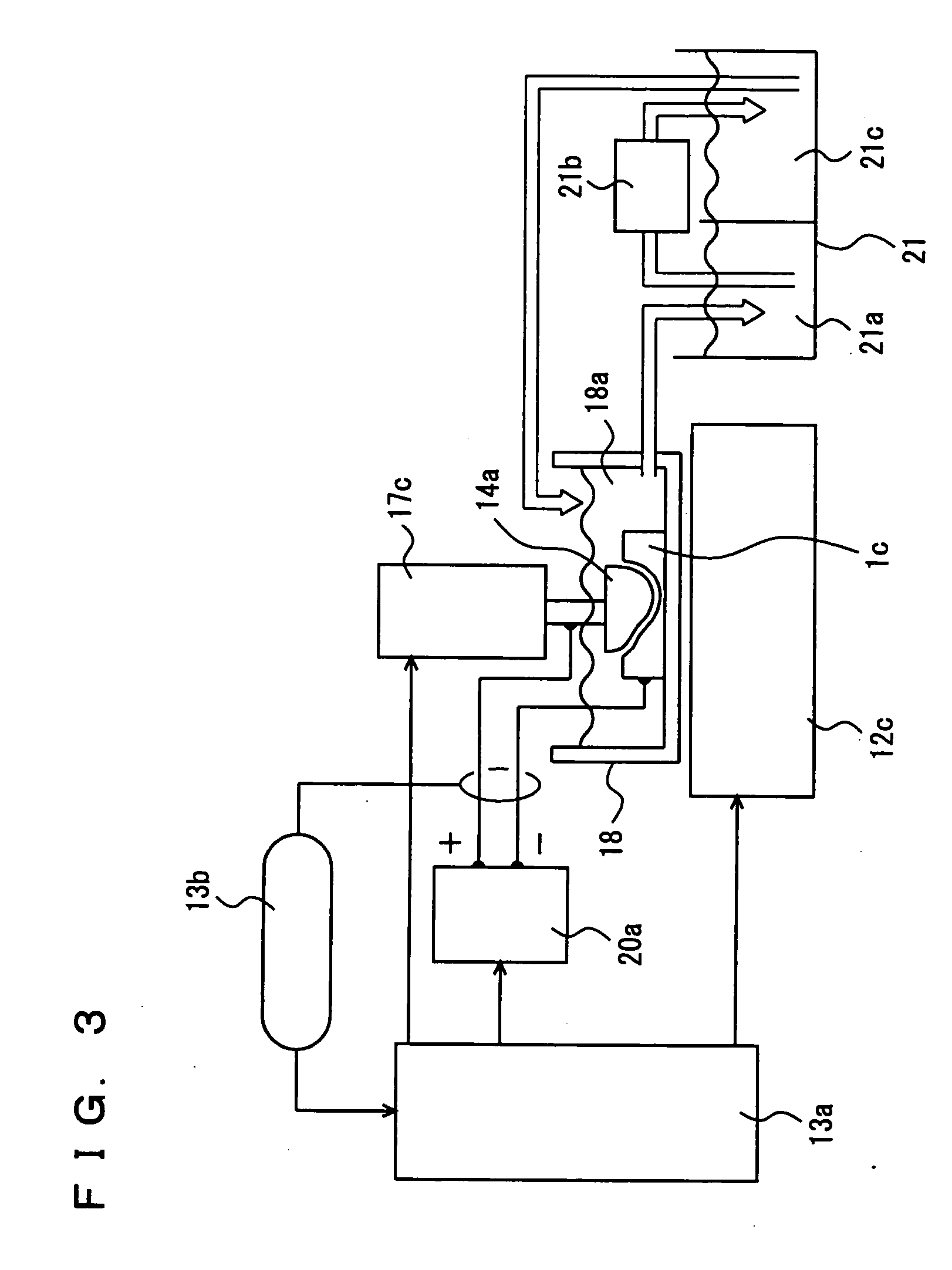Method of working nitride semiconductor crystal
a technology of nitride and semiconductor crystals, which is applied in the direction of grinding drives, manufacturing tools, grinding machine components, etc., can solve the problems of cracks or fractures, crack generation and waviness on the surface, and the difficulty of cutting such a nitride crystal, etc., to achieve simple and efficient manner and reduce costs.
- Summary
- Abstract
- Description
- Claims
- Application Information
AI Technical Summary
Benefits of technology
Problems solved by technology
Method used
Image
Examples
first example
[0043] In a first example of the present invention, electrical discharge cutting was performed on a gallium nitride crystal having a diameter of 50 mm and a thickness of 30 mm grown by HVPE. This crystal contained oxygen as a dopant, and it had a carrier concentration of 4×1018 cm−3 and an electrical resistance of 1×10−2 Ωcm. As shown in FIG. 1, crystal 1 was fixed to metal holder 2 with a conductive adhesive, and metal holder 2 was clamped to an electrical discharge machining apparatus. Wire electrode 3 of tungsten having a diameter of 0.1 mm was used (TWS-100 manufactured by Sumiden Fine Conductors). Cutting was performed on the crystal immersed in insulating water adjusted to have an electrical resistance of 70000 Ω. The wire was fed at a speed of 12 m / min, a working current was set at a value of 7, and a working voltage was set at 60 V. It took five hours to complete cutting under a constant electrical discharge condition with feeding-back of the voltage.
[0044] A substrate cut ...
second example
[0046] In a second example of the present invention, cutting was performed under similar conditions as those in the first example, except that a molybdenum wire having a diameter of 0.1 mm (TM-100 manufactured by Sumiden Fine Conductors) was used as the wire electrode. It also took five hours to complete cutting in the second example.
[0047] A substrate cut out had a thickness of 500 μm, and the cutting-loss as the width of the cutting groove was 150 μm. In addition, the substrate cut out had a warp of 15 μm. Further, the cut-surface of the substrate had a surface roughness Ra of 480 nm and a surface roughness Ry of 5200 nm.
third example
[0048] A third example of the present invention was different from the first example only in that a brass wire having a diameter of 0.15 mm (SS-15HN manufactured by Sumiden Fine Conductors) was used as the wire electrode and that cutting was performed with a working current set at a value of 11 and a working voltage set at 60 V. In the third example, it took two hours to complete cutting, enabling cutting in a short period of time. On the other hand, since the wire electrode used in the third example had a larger diameter than that in the first example, the cutting-loss increased to 190 μm.
PUM
| Property | Measurement | Unit |
|---|---|---|
| angle | aaaaa | aaaaa |
| flatness | aaaaa | aaaaa |
| flatness | aaaaa | aaaaa |
Abstract
Description
Claims
Application Information
 Login to View More
Login to View More - R&D
- Intellectual Property
- Life Sciences
- Materials
- Tech Scout
- Unparalleled Data Quality
- Higher Quality Content
- 60% Fewer Hallucinations
Browse by: Latest US Patents, China's latest patents, Technical Efficacy Thesaurus, Application Domain, Technology Topic, Popular Technical Reports.
© 2025 PatSnap. All rights reserved.Legal|Privacy policy|Modern Slavery Act Transparency Statement|Sitemap|About US| Contact US: help@patsnap.com



